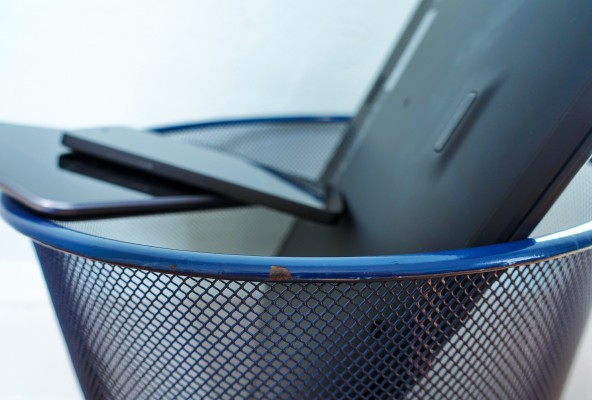Tell Tale Tech: Obsolete Objects
March 29, 2015
Each year, tech companies will make a point to refresh either the design or internal specs of their most popular products. Often times they update both. And while the tech industry strives for innovation and new things at every juncture, this practice leaves many consumers behind oftentimes not for any legitimate reason. Unfortunately, consumer tech companies will do anything they can to “encourage” consumers to upgrade to their latest offerings.
Possibly the most infamous example concerns some of the older iPhone models, which had notoriously problematic home buttons. After a period of only 18 months, it was surprisingly likely for this button to break, which seriously impaired the phone. While maybe not completely intentional, it is a known issue that Apple refused to address on the older models. As a result, many people had to choose between using a broken phone indefinitely and buying a new phone altogether, which is ridiculous given how much they cost in the first place.
While not as egregious in their methods, laptop manufacturers force this decision on consumers as well. Most notably, since the internal parts of most laptops are soldered together, consumers have no options to upgrade, and are stuck with whatever they bought when new iterations come out. These new models are released on a preset schedule though, regardless of whether or not the updates are significant. All of the major parts manufacturers, like Intel and Nvidia, have roadmaps for their product releases, which are publicly available for the most part. Tech companies, like Apple or Dell, take advantage of this information by updating their products on these schedules for the express purpose of being able to offer the latest components.
Another widespread problem on both phones and computers is the constantly changing standards of connection ports. While there are standards that all companies could use, some manufacturers insist on creating their own that are incompatible with all others. And when they update their proprietary input ports, older iterations become incompatible as well, which creates unnecessary division and complication for the end user.
Software can be just as much of an issue, particularly in the mobile space. Microsoft, Apple and Google are all guilty of either dropping software support for devices using older hardware or not designing it with these older devices in mind. In other words, they might claim software is compatible with your device, but there is no guarantee that it will run well. And if it doesn’t, then there’s really no other option than to upgrade your hardware, if you want to use that new software.
And a startling number of people are willing to just buy their way out of these problems. But let’s take a step back for a moment. Even if you have the money, it is very rarely worth it to do so. We’re all guilty of getting lost in the spec-wars, but real world performance is never as cut and dry as the benchmarks indicate. Truth be told, most of these test results are fabricated anyways.
But anyways, technology is never going to stop progressing. And it shouldn’t. But as consumers, we have to stop enabling companies from taking advantage of our need for the absolute latest. New technology is nice, but not at the expense of making everything that came before it seem useless. And if tech companies aren’t going to be responsible about it, then we have to be instead.
So, don’t just toss your computer or phone into the trash because a newer model has a slightly faster processor or is marginally thinner. Keep it for as long as you can and wait until there’s something actually worth upgrading for.










